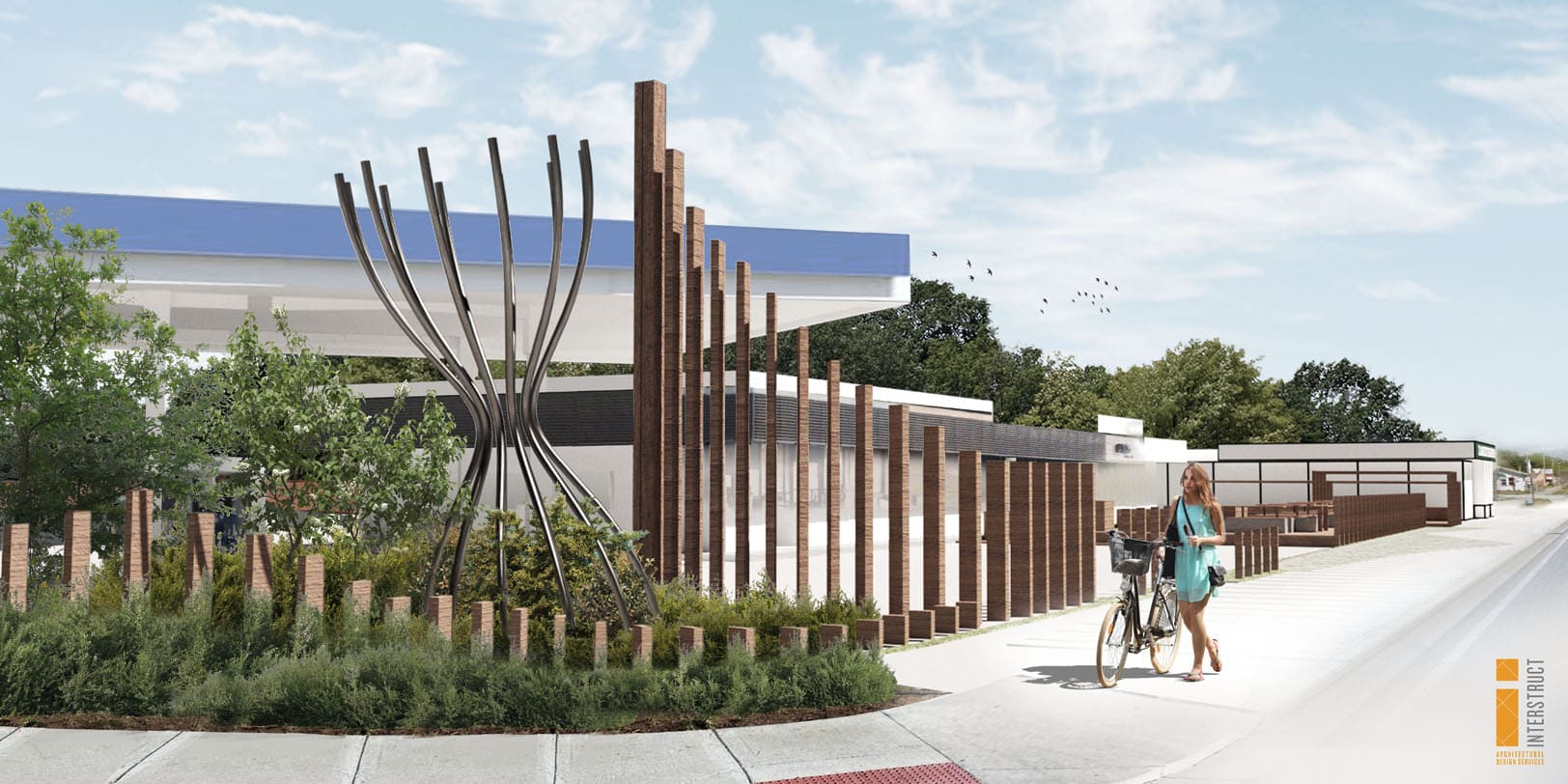11.09.2018
Updates in Orlando’s Hourglass District
A granular look at how the Hourglass District is shaping into Orlando’s most exciting neighborhood.
In late 2017, Interstruct presented its bold vision for the future of the Hourglass District to Central Florida developer Giovanni Fernandez and his wife Elise Sabatino. Their company, National Real Estate, purchased multiple parcels clustered around the hub of S. Bumby Avenue and Curry Ford Road. Interstruct was already in the neighborhood with their FrancisPark Townhomes.
“We wanted to show them the potential of the two-block site” says Ryan Young, co-founder of Interstruct, Inc. Since then, he and design team members Nathan Wallace and Carlo Hernandez have moved the renderings forward with a new level of thought, detail and progressive requests for Orange County to consider.

Three local businesses transformed a former convenience store.
So far, the northeast corner is the highest profile development in the Hourglass District so far. A former convenience store has been transformed to house three hyper-local businesses: a new outlet for Foxtail Coffee, a vegan food-counter called Leguminati, and beer and wine sales under the banner of the Hourglass Social House. Drivers can still pull in to pump gas at the Mobile station, but now an attendant provides full-service.
“Instead of occupying 3,000 square feet as one business,” says Young, “there are multiple uses at different times of the day.” You might say this concept is the guiding principle of the entire Hourglass development.
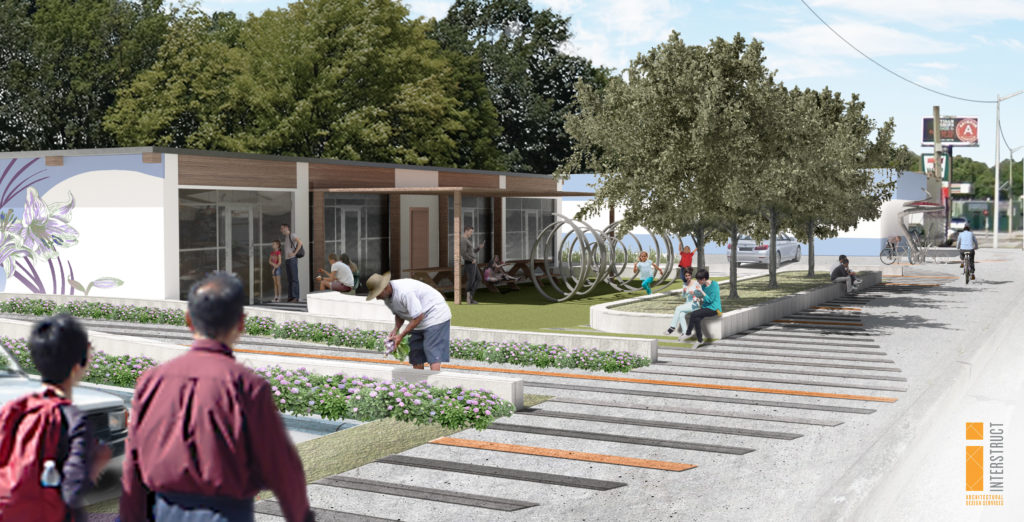
Local shops, a pocket park, installation art and food trucks breathe life into old space.
Take the former car wash across the street (south side of Curry Ford). Interstruct initially envisioned open bays for food trucks. Now, they will be enclosed for small retail shops. Think tiny: each bay about 150 square-feet. “Just the right size for an entrepreneur to try out their idea,” says Young. “Local, innovative shops can survive here since there are enough people who walk by and use them. They lend themselves to a more creative environment. You can cycle through; if one concept doesn’t work, it’s an opportunity for someone else to use the space.”
Within the new renderings, a pocket park occupies the space in front of the shops where tables and shade invite users to linger and connect. Parking is strategically moved to the rear of the development to make way for people-power to activate the space. “Our designs integrate food trucks and event space,” explains Young. “On food-truck days, the trucks can pull right in to the back edge of the park.”
“I really love this project as a whole and feel a calling for the pocket parks and pavilions. These gathering spaces breathe life into the community.”
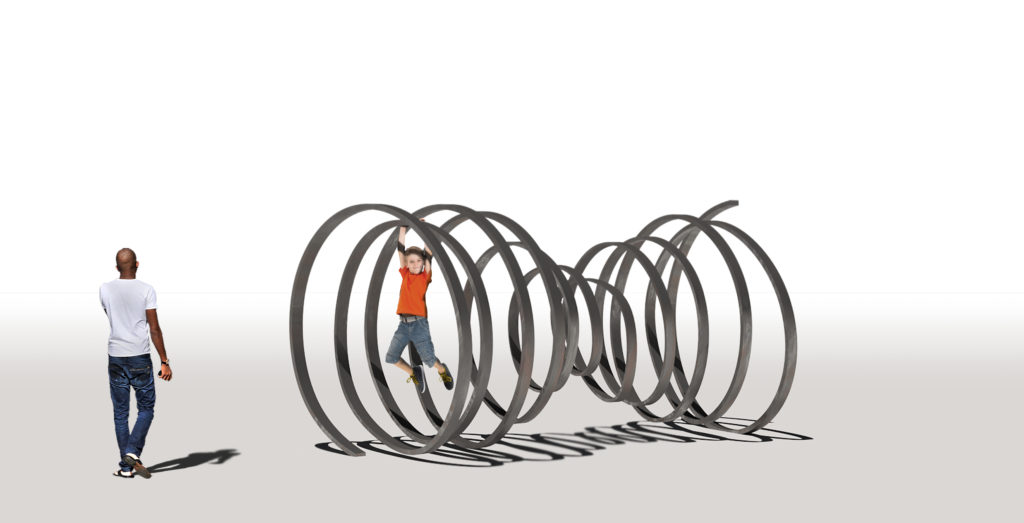
The Interstruct design team is also passionate about creating beautiful and interesting sculptures that are representational of the neighborhood. For instance, an abstract hourglass tipped on its side becomes a play space for kids. Another take the hourglass form becomes a large-scale installation on the northeast corner. “This isn’t just for beautification,” says Young, “but to serve as a wayfinding device and an unforgettable way to designate the neighborhood.”
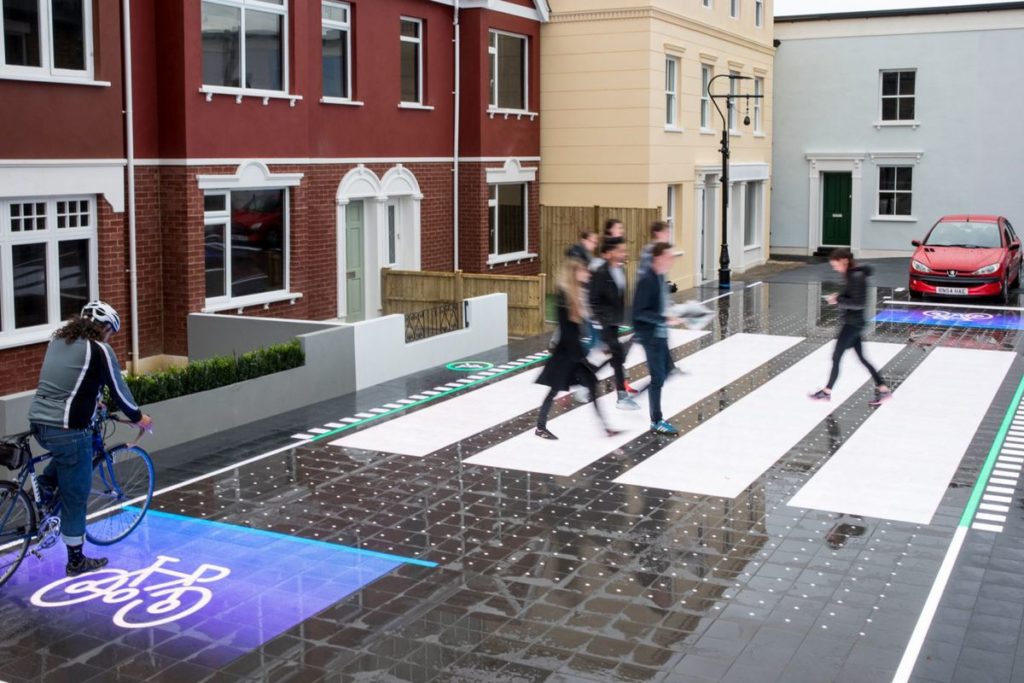
Sidewalks, curb-cuts and crosswalks may not sound sexy, but they are!
Young is a passionate student of global urban environments and what makes cities the most liveable. Creating spaces for people to connect is key. But they have to be safe too.
Starting with the pocket park in front of the former car wash, Interstruct is lobbying Orange County for wider sidewalks, new curb cuts that improve access, landscaping, and most important, a mid-block pedestrian crosswalk to connect the businesses along the north and south sides of Curry Ford. This will slow traffic and give drivers a reason to pause and look around and think, “Hey, I want to be part of this.” And of course, to keep pedestrians, cyclists and drivers safe.
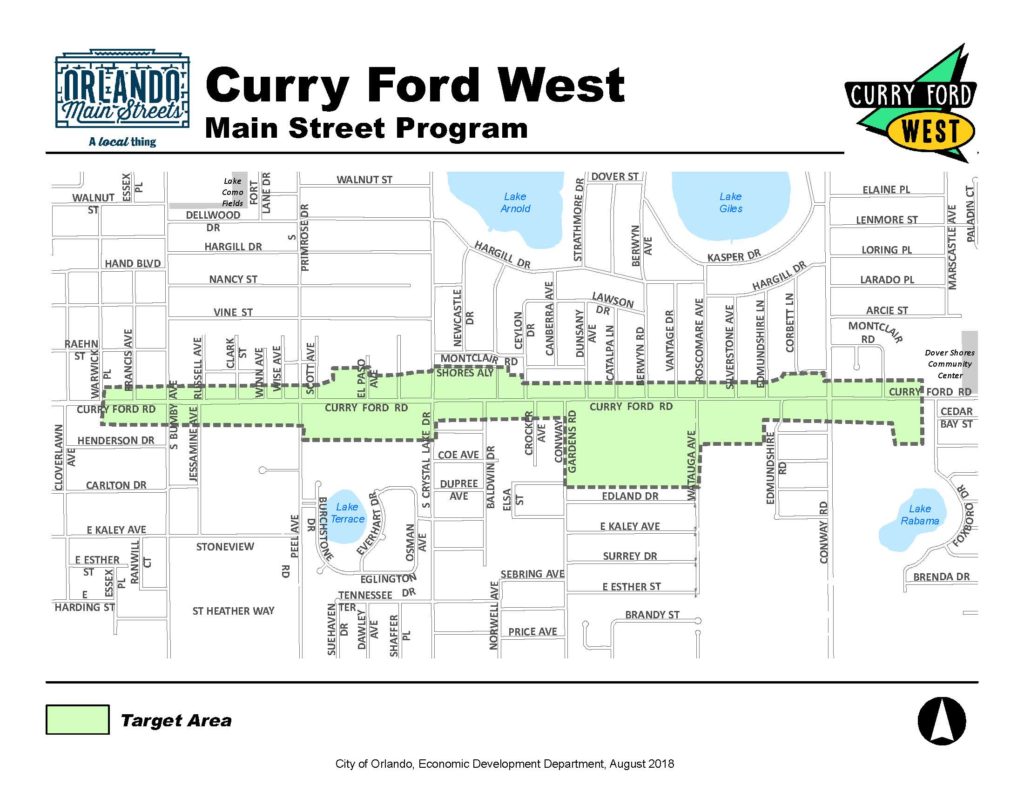
Orlando’s newest Main Street as the incubator of a new technology?
The City of Orlando has officially designated the area an official Main Street District called Curry Ford West. The Hourglass District anchors the west end of a mile-and-a-half long area that reaches just east of Conway Road. Being named a Main Street District doesn’t just mean it gets a fancy new sign, but the title also comes with financial aid and technical assistance to activate the commercial components. Curry Ford West joins other Main and Market Streets including those in Thornton Park, College Park, Audubon Park and Mills 50.
Young hopes to find a partner in Curry Ford West Main Street District to pilot an innovative responsive road surface called Starling Crossing developed by UK-based Umbrellium — a company that designs and builds urban technologies that support citizen empowerment and high-impact engagement in cities — as part of the proposed mid-block crosswalk in the Hourglass District. Starling Crossing responds dynamically in real-time to make pedestrians, cyclists and drivers safer and more aware of each other. Says Young, “We’d love to be able to position the newest Main Street member as technologically advanced.”
There’s the cool factor, too. “If I heard this was built somewhere in Orlando, I’d want to come and see it.”

What makes a pocket neighborhood?
While Interstruct’s design work is most detailed at the epicenter of Bumby Avenue and Curry Ford Road, the company looks forward to expanding its vision for cluster homes as part of the district’s master plan. Cluster homes are a component of pocket neighborhoods, “a pattern of housing that fosters a strong sense of community among nearby neighbors, while preserving their need for privacy.” The description and in-depth information about this concept developed by Ross Chapin Architects comes from PocketNeighborhoods.com and is a guiding principle for the Interstruct design team. We’ll bring you more details down the road as the cluster homes become a focus of the master plan, but for now, let’s look at the birds in hand.
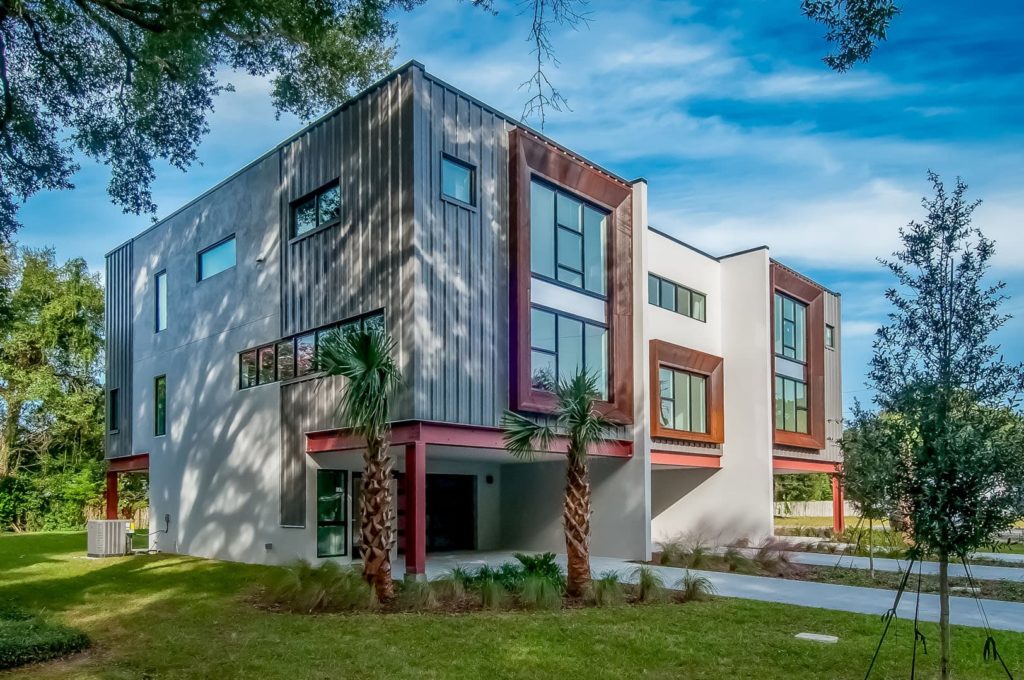
Interstruct’s stake in the Hourglass District.
Interstruct’s interest in the area began in 2006, when co-founder Ryan Young built a house for him and his wife on Francis Avenue. The company purchased the neighboring land that was once a non-conform Masons Lodge and has since been developed, designed and built by Interstruct as FrancisPark Townhomes — two phases, each with three units. Phase I was completed in 2017 and Phase II is underway. The corner unit at Vine and Francis is still for sale: a 2,200 square-foot home with two-stories of living space atop a garage, patio and carport ($429,000, listed with Old Town Brokers).
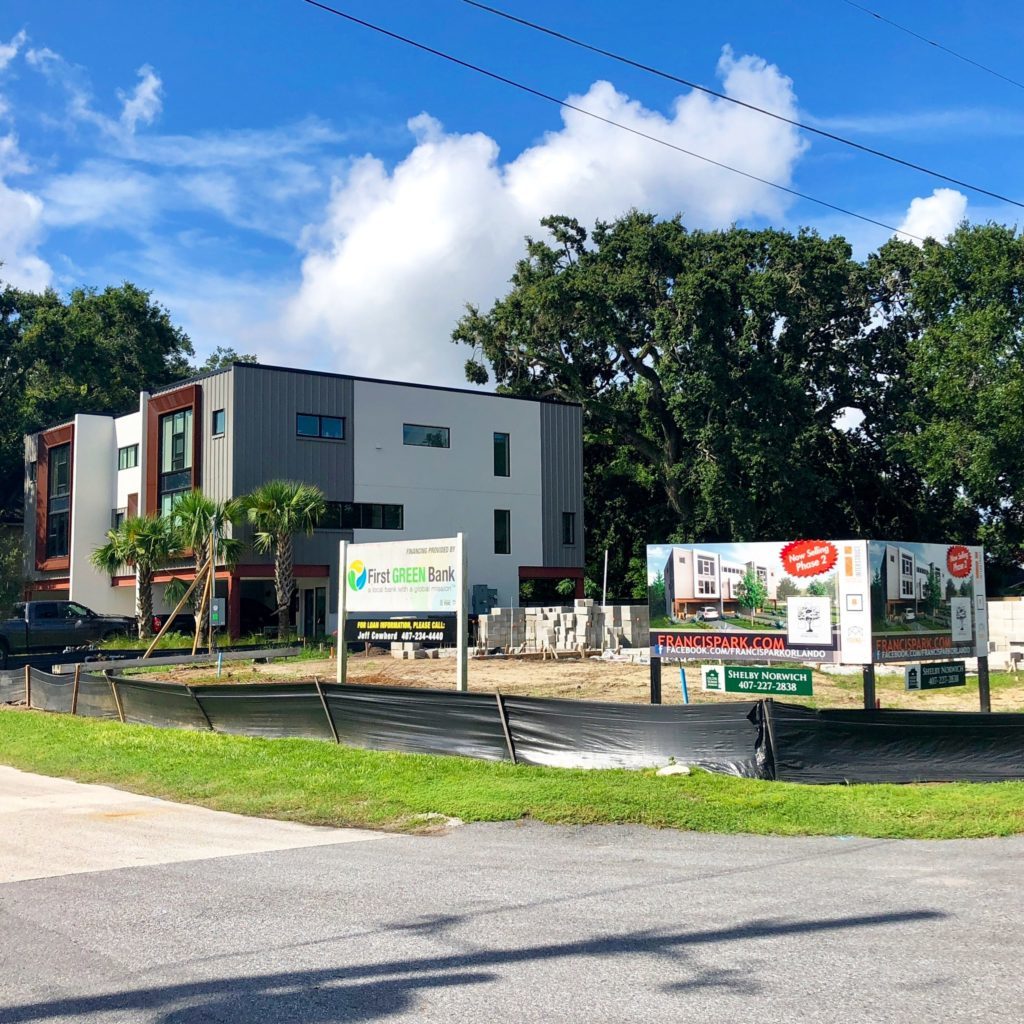
The company owns five other rental homes on that street. “We are thoughtfully considering our options for development as the neighborhood progresses,” says Young.
“We are excited to have the opportunity to design in such a meaningful way.”


